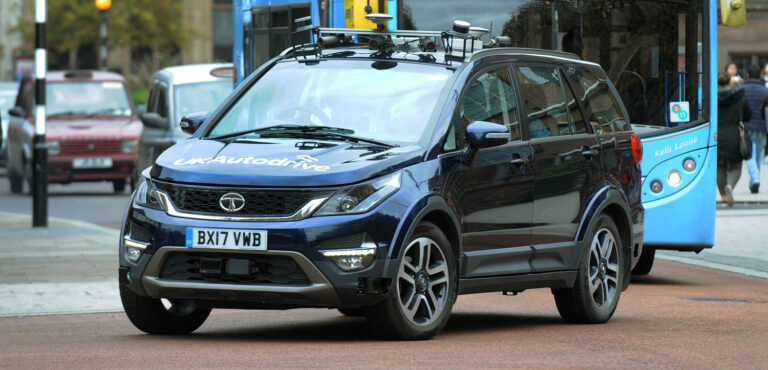Tata Motors has revealed its commitment to developing the future of mobility following a three-year project developing connected and autonomous vehicle technology.
At Tata Motors European Technical Centre (TMETC) in Coventry, UK, the car maker demonstrated its latest technology on real-world public road using its Hexa SUV, which was able to accommodate the necessary hardware for connected driving.
“Our connectivity vehicle experience has enabled us to safely test and demonstrate numerous features including GLOSA (Green Light Optimal Speed Advisory) and EEBL (Electronic Emergency Brake Light). It has also demonstrated how vehicles and infrastructure will work in tandem for a motoring network in the future,” said David Hudson, head of propulsion at TMETC.
“Although the autonomous systems are technically capable of SAE Level 4 automation for the trials we used safety drivers so we were actually running at SAE Level 3.”
Tata Motors worked alongside other OEMs as part of the UK Autodrive project – a government funded initiative that brings together companies, engineers and academia working on the latest technology to explore the impact of ACES (Autonomous, Connected, Electric and Shared) technology, in a safe and controlled setting.
Tata Motor’s findings from the three-year project, which has now come to an end, will help the company introduce its technologies to public roads not only in the UK, but also India – a market considered to be one of the most difficult to introduce self-driving vehicles to.
“This has been a challenging project but has enabled us to safely test our technologies on public roads in a real-world environment,” said Hudson.
“Our primary market is in India whose mobility requirements are different to the UK.
“Road congestion, air pollution and road safety, though important in the UK, are acute concerns in India. The country is likely to embrace connected, electric and shared technology sooner than its counterparts and therefore it is essential we remain at the forefront of these developments.
“Autonomy will be a consideration for the future in India, and as the UK has already published a code of practice for testing autonomous vehicles safely and legally, it provides the ideal platform to enable us to challenge our self-driving vehicle capabilities.
“The autonomy element has been most challenging and rewarding with the consideration of real-time locations, route planning and obstacle avoidance decision making. However, it is often the unpredictable behavior of other road users and pedestrians that has added to the challenge.
“We are pleased by the end of this project we have achieved an appropriate level of self-driving capability to allow us to move forward with our next steps in the mobility revolution.”


